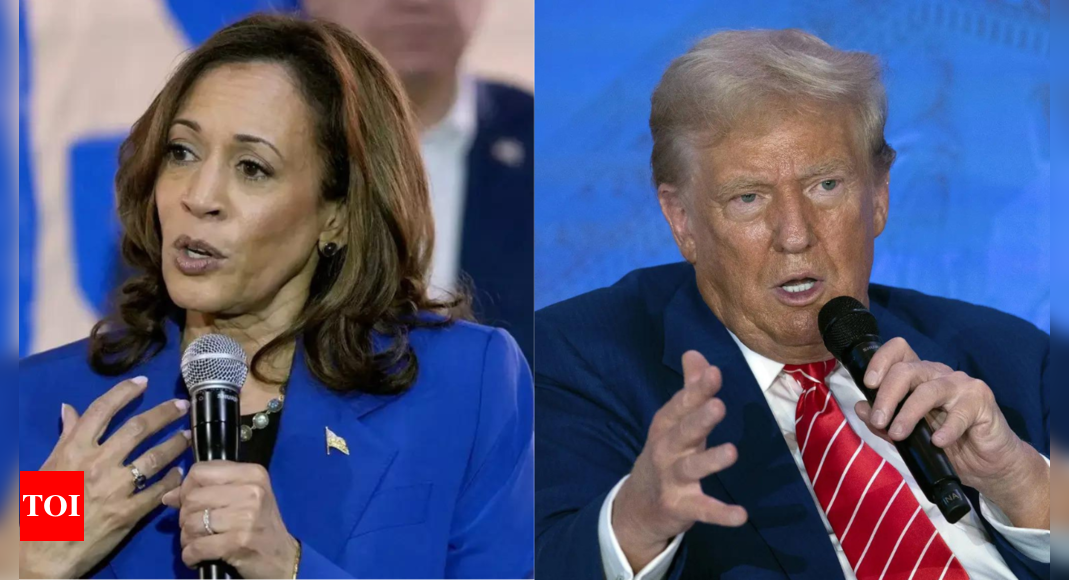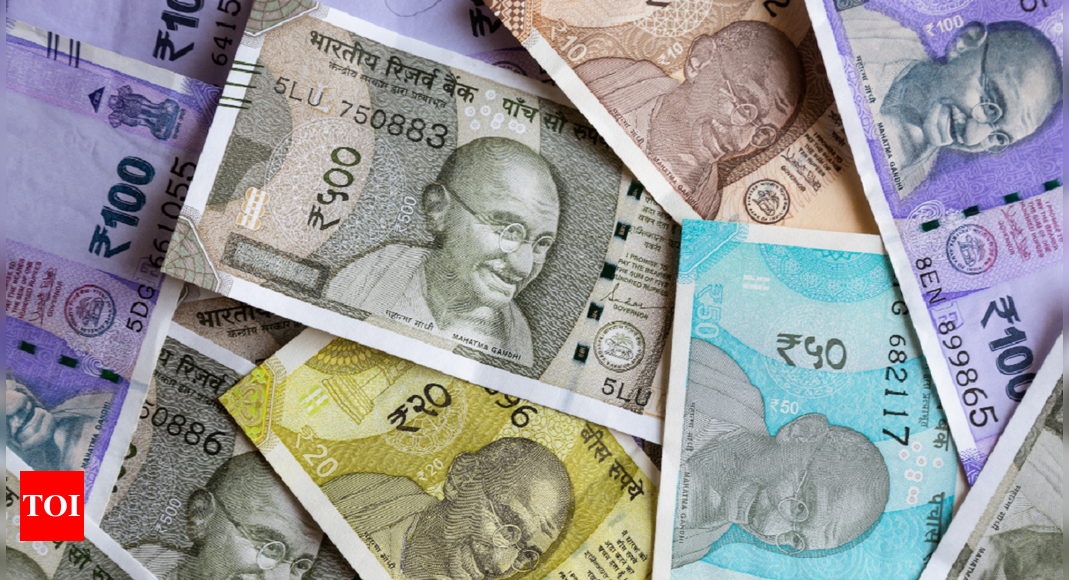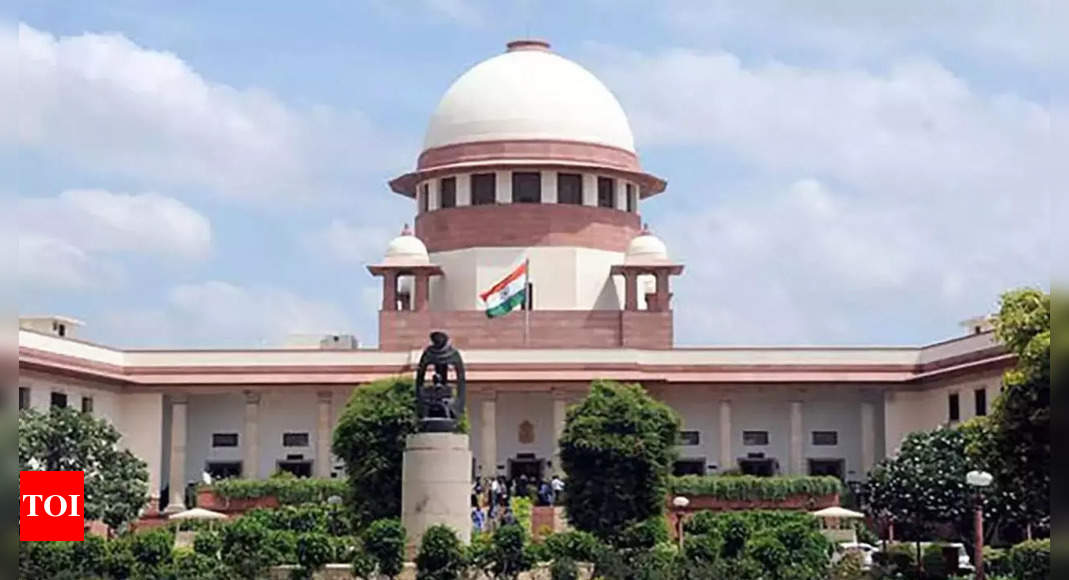
As the 2024 US presidential election approaches on November 5, what was expected to be a repeat of the 2020 election turned into a high-stakes contest between Vice President Kamala Harris and former President Donald Trump following Joe Biden’s exit from the race for the White House. This left the nation wondering whether it would witness a historic moment with its first female president or a return to Trump’s leadership.
Polls show a close race
Polls had consistently shown Biden trailing Trump before he exited the race.At that time, Kamala Harris was also not polling strongly, but after hitting the campaign trail, she managed to narrow the gap. According to recent national polling averages, Harris led with 47%, while Trump sat at 44%, reported BBC. Harris’s campaign received a slight bump during the Democratic convention in Chicago, where she spoke of “a new way forward.” However, Trump’s endorsement by Robert F. Kennedy in late August did not seem to alter the race, as his numbers remained relatively steady.
Swing state showdown
While these national figures offered insights, they did not paint the full picture due to the US Electoral College system. The real battle was fought in a handful of swing states—Pennsylvania, Michigan, Wisconsin, and others—that could tip the scales in either direction. In these key battlegrounds, the margin between the candidates was razor-thin, often less than one percentage point. Pennsylvania, with its significant electoral vote count, was expected to play a crucial role in determining the winner.
High-stakes debate ahead
The looming presidential debate is expected to be a game-changer. A New York Times/Siena poll suggested that Trump held a narrow one-point lead nationally, signaling that the race remained highly competitive. What was even more telling was that while 90% of voters said they knew all they needed to about Trump, only 71% said the same about Harris. This discrepancy meant that Harris had much more to prove during the debate, where a large audience was tuning in to decide between the two candidates.
“We were up against a guy who was a convicted felon, a terrible president, and continued to be a terrible human,” a Democratic strategist said. “Yet, this race was still tight as a tick.”
Tight polls, strong fundraising for Harris
Despite the neck-and-neck race, some Democrats believed the tight polls could actually benefit Harris. “I was glad this poll came out. It was a gift to Democrats,” said Anthony Coley, a former Biden administration official, who saw the close numbers as a motivating factor.
Momentum shifts and challenges
Polling expert Nate Silver also noted that the momentum had shifted slightly in Trump’s favor, warning that Harris could face further challenges as Republicans continued to paint her as too progressive. A Times poll reflected this narrative, with 44% of respondents agreeing that Harris was too progressive compared to 32% for Trump being too conservative.
Still, Harris’s camp remained optimistic, with strategists pointing to her strong fundraising numbers. In August, her campaign raised a staggering $361 million—nearly triple what Trump’s campaign brought in. Democratic strategist Christy Setzer downplayed concerns over Trump’s recent lead in the polls, saying, “Anyone worried that a single poll, showing Trump up by a single point, needed more drama in their life.”
Harris’s base continued to rally behind her, with packed campaign events across swing states. “The paths that Kamala Harris had to 270 [electoral votes] had expanded from when she stepped into the race,” noted Democratic strategist Joel Payne.
As the campaign intensified, all eyes were on the upcoming debate, where Harris had the chance to elevate her candidacy and shift the narrative in her favor.
Polls show a close race
Polls had consistently shown Biden trailing Trump before he exited the race.At that time, Kamala Harris was also not polling strongly, but after hitting the campaign trail, she managed to narrow the gap. According to recent national polling averages, Harris led with 47%, while Trump sat at 44%, reported BBC. Harris’s campaign received a slight bump during the Democratic convention in Chicago, where she spoke of “a new way forward.” However, Trump’s endorsement by Robert F. Kennedy in late August did not seem to alter the race, as his numbers remained relatively steady.
Swing state showdown
While these national figures offered insights, they did not paint the full picture due to the US Electoral College system. The real battle was fought in a handful of swing states—Pennsylvania, Michigan, Wisconsin, and others—that could tip the scales in either direction. In these key battlegrounds, the margin between the candidates was razor-thin, often less than one percentage point. Pennsylvania, with its significant electoral vote count, was expected to play a crucial role in determining the winner.
High-stakes debate ahead
The looming presidential debate is expected to be a game-changer. A New York Times/Siena poll suggested that Trump held a narrow one-point lead nationally, signaling that the race remained highly competitive. What was even more telling was that while 90% of voters said they knew all they needed to about Trump, only 71% said the same about Harris. This discrepancy meant that Harris had much more to prove during the debate, where a large audience was tuning in to decide between the two candidates.
“We were up against a guy who was a convicted felon, a terrible president, and continued to be a terrible human,” a Democratic strategist said. “Yet, this race was still tight as a tick.”
Tight polls, strong fundraising for Harris
Despite the neck-and-neck race, some Democrats believed the tight polls could actually benefit Harris. “I was glad this poll came out. It was a gift to Democrats,” said Anthony Coley, a former Biden administration official, who saw the close numbers as a motivating factor.
Momentum shifts and challenges
Polling expert Nate Silver also noted that the momentum had shifted slightly in Trump’s favor, warning that Harris could face further challenges as Republicans continued to paint her as too progressive. A Times poll reflected this narrative, with 44% of respondents agreeing that Harris was too progressive compared to 32% for Trump being too conservative.
Still, Harris’s camp remained optimistic, with strategists pointing to her strong fundraising numbers. In August, her campaign raised a staggering $361 million—nearly triple what Trump’s campaign brought in. Democratic strategist Christy Setzer downplayed concerns over Trump’s recent lead in the polls, saying, “Anyone worried that a single poll, showing Trump up by a single point, needed more drama in their life.”
Harris’s base continued to rally behind her, with packed campaign events across swing states. “The paths that Kamala Harris had to 270 [electoral votes] had expanded from when she stepped into the race,” noted Democratic strategist Joel Payne.
As the campaign intensified, all eyes were on the upcoming debate, where Harris had the chance to elevate her candidacy and shift the narrative in her favor.









